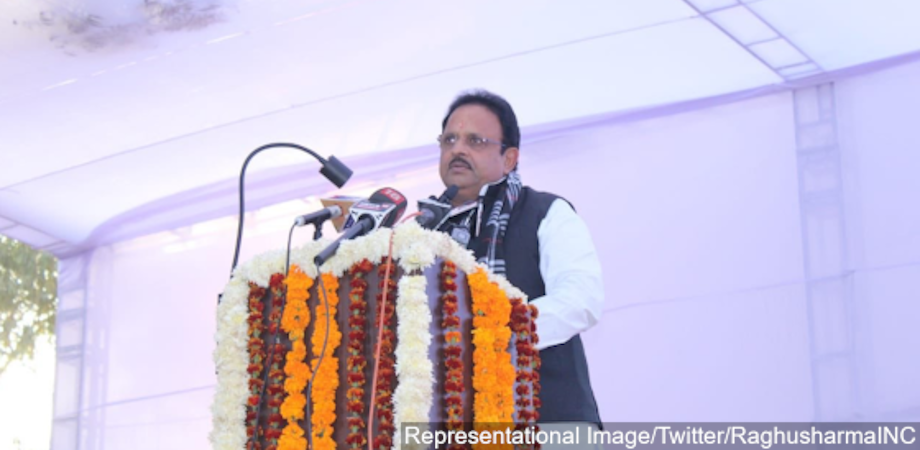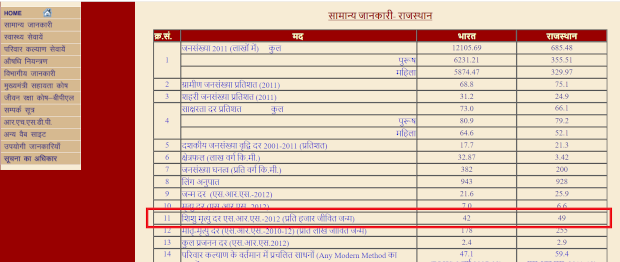Rajasthan's Health Minister Wrong On Infant Mortality Rate Claim

Mumbai: The Rajasthan government has reduced the state's infant mortality rate (IMR) to 5.55% in 2019 compared to 7.62% in 2014, claimed the state's health minister, Raghu Sharma, on December 31, 2019. This is incorrect and does not concur with the latest government data, FactChecker.in found.
The figure stated by the minister is not the state's IMR. It is the ratio of deaths per 100 admissions of infants/children at Kota's JK Lon Mother and Child Hospital, which reported 100 infant deaths for the month of December 2019; the hospital recorded 940 infant deaths in 2019.
More than 500 infant deaths have been reported from six government hospitals in Rajasthan and Gujarat in December 2019, IndiaSpend reported on January 9, 2019. On average, 1,975 infants died in India every day in 2018. Experts blame poor primary health infrastructure, poor antenatal care and malnutrition.
IMR is considered to be a rough indicator of a country's overall healthcare scenario. The rate is expressed per 1,000 live births, and not in percentage terms as articulated by the minister. IMR can only be expressed in terms of number-per-1,000-live-births, said an expert in fertility studies who did not wished to be identified.
Here's a factcheck on the minister's claim:
Claim: The infant mortality rate in Rajasthan was 7.62% in 2014, 7.17% in 2015, 6.66% in 2016, 6% in 2017 & 6.11% in 2018. We have reduced it to 5.55% in 2019.
Fact: False.
Rajasthan reported an IMR of 38 deaths per 1,000 live births in 2017, as per the latest Sample Registration Survey (SRS) Statistical Report 2017. This is 17% less than the IMR of 46 in 2014.
The figures cited by the minister are the percentage of child/infant deaths against the total child/infant admissions at the JK Lon Mother and Child Hospital in Kota, data accessed by Factchecker.in show.
Access Data Here; *2019 data as on December 24, 2019.Note:The data were accessed by FactChecker.in through a source. We have reached out to the JK Lon Hospital officials by email requesting official data/information and are awaiting their response. We have also reached out to the Rajasthan's Department of Medical, Health and Family Welfare through email requesting their response, and will update this report if and when we receive it. These above mentioned figures were also reported by the Times of India on January 2, 2020, and The Print on January 3, 2020.
JK Lon Mother and Child Hospital reported more than 6,600 infant/child deaths for the six-year period from January 2014 to December 2019. The deaths per 100 admissions declined from 7.6% in 2014 to nearly 5.6% in 2019.
"A child/infant death rate [deaths per 100 admissions] of 7-10% in a district hospital is typical," said Sunil Mehra, paediatrician and executive director of non-profit MAMTA, which works on maternal and child health in Rajasthan. This is because district hospitals cannot turn away patients. This is unlike the primary and secondary care centres which can refer patients to the district hospital if they are overcrowded or underequipped.
There is a perception among patients that the best care will be available at a district hospital. This prompts patients to rush to district hospitals, which may not be able to cope with the sheer number of patients, said Mehra.
The minister also claimed to "have reduced the IMR to 5.55% in 2019".
"Even if it is claimed that the overall IMR has reduced it does not mean that this has happened [uniformly] across all regions in the state," said Chhaya Pachauli from Jan Swasthya Abhiyan, Rajasthan, a network of organisations advocating health rights. "IMR in rural Rajasthan is still very high at 42. Even if the state MIS [management information system] report on health is cited for the IMR figures, these are not as reliable as the SRS or the National Family Health Survey data released by the government. The latest data available for infant mortality rate is the SRS 2017 bulletin, which was released in 2019."
The IMR figures quoted by Rajasthan's health minister differ from the SRS data. The state government's health ministry website also cites 2012 SRS for infant mortality rate (49), as on date.

Infant Mortality rate displayed on Rajasthan government's health ministry website (accessed on January 10, 2020) cites the Sample Registration Survey of 2012.
On December 6, 2019, replying to a question in the Lok Sabha (Parliament's lower house) on maternal and infant mortality rates in the country, Ashwini Kumar Choubey, union minister of state in the ministry of health and family welfare, also cited the SRS 2017 figures, being the latest available.
Infant mortality rate in Rajasthan
IMR comprises of two parts, neo-natal (infants aged less than 29 days) mortality rate and post neo-natal (infants aged 29 days to less than a year) mortality rate. The neo-natal mortality rate also comprises of two parts: early neo-natal (infants aged less than seven days) mortality rate and late neo-natal (infants aged between seven and 29 days) mortality rate.
India reduced its IMR by 42% over 11 years, from 57 per 1,000 live births in 2006 to 33 in 2017, IndiaSpend reported in June 2019. Rajasthan has India's seventh worst IMR, along with Chhattisgarh, with 38 infant deaths per 1,000 live births, as per SRS 2017. The six worst faring states are Madhya Pradesh (47), Assam (44), Arunachal Pradesh (42), Odisha (41), Uttar Pradesh (41) and Meghalaya (39).
"Every single death counts," said Pachauli. "Even if a single death takes place in the state, it has to be looked into with serious concern. So many deaths are taking place in such a short duration... this shows that there are major issues with regards to child and infant health in the state. These justifications are lame excuses given by the government."
We welcome feedback. Please write to respond@indiaspend.org. We reserve the right to edit responses for language and grammar.



